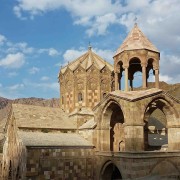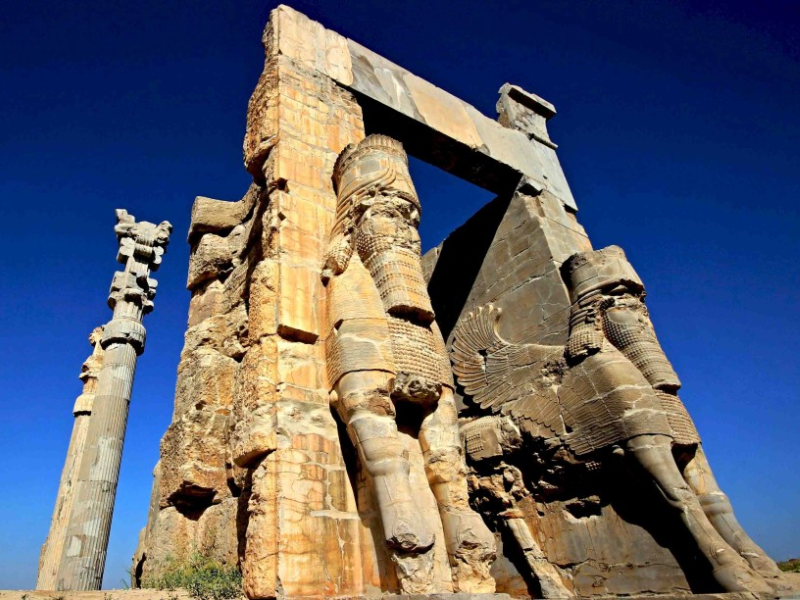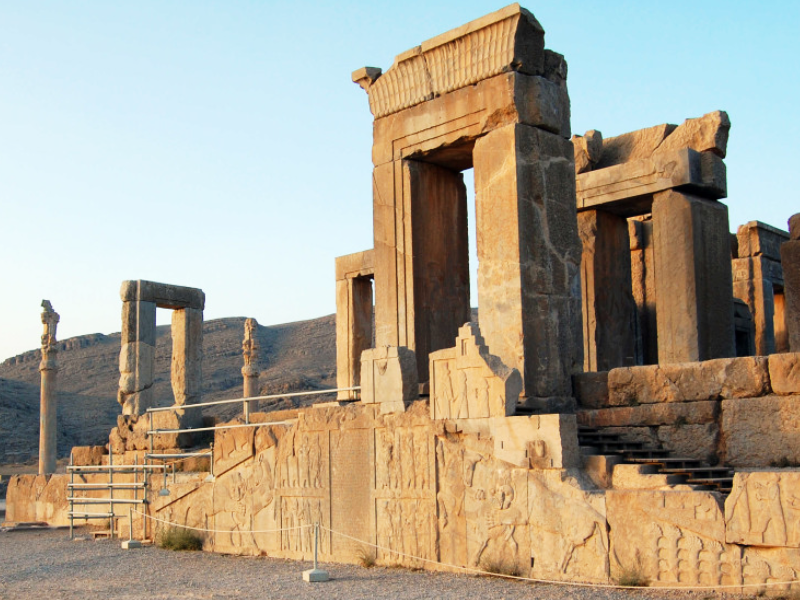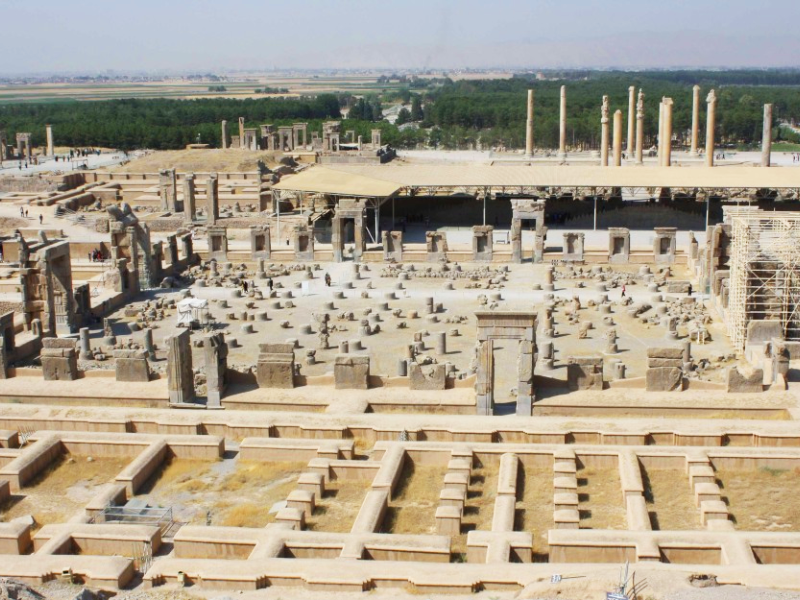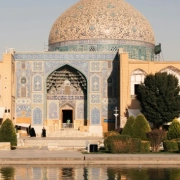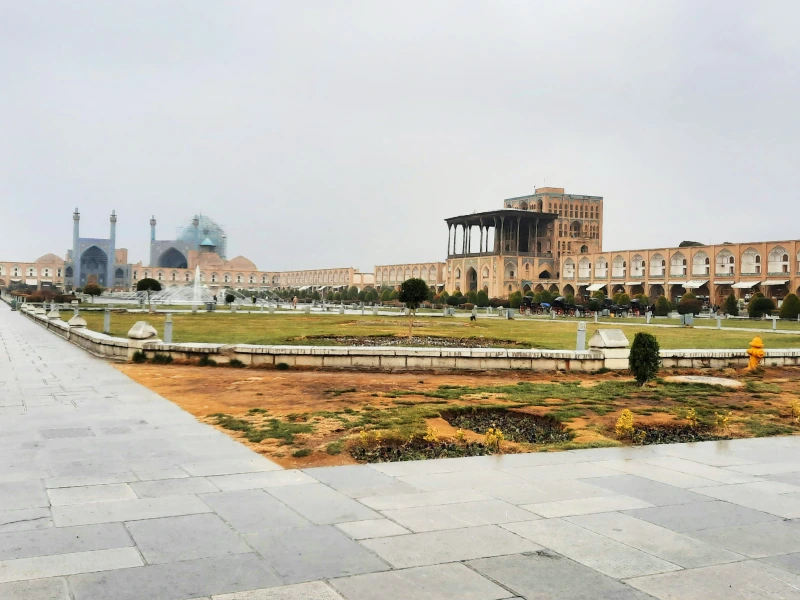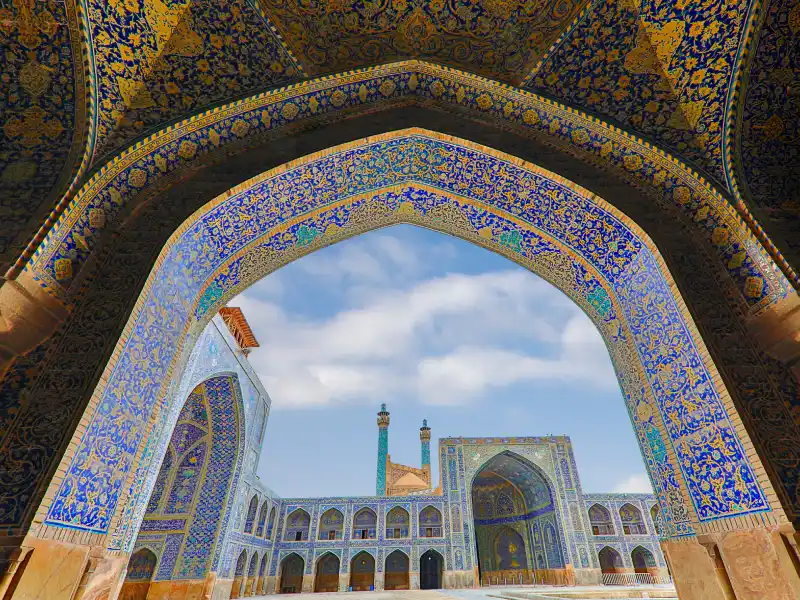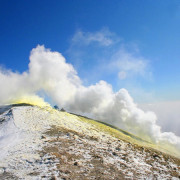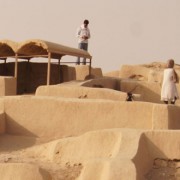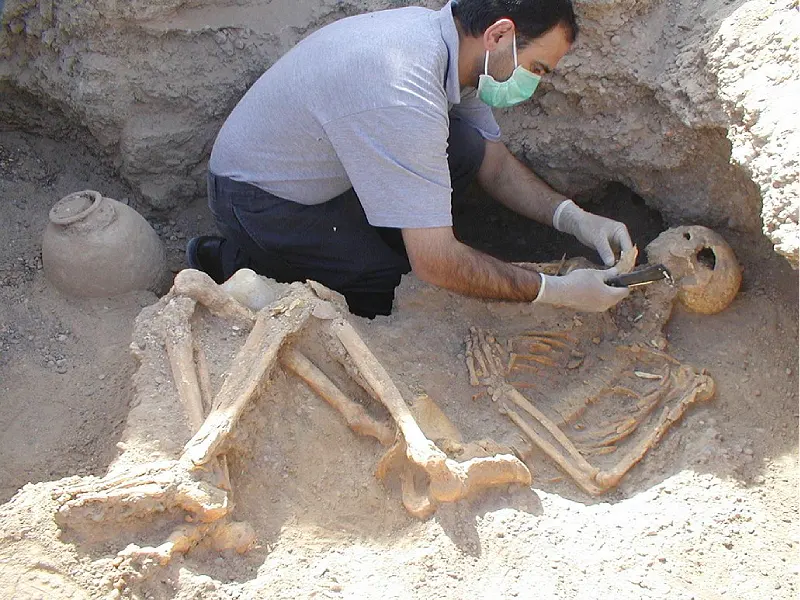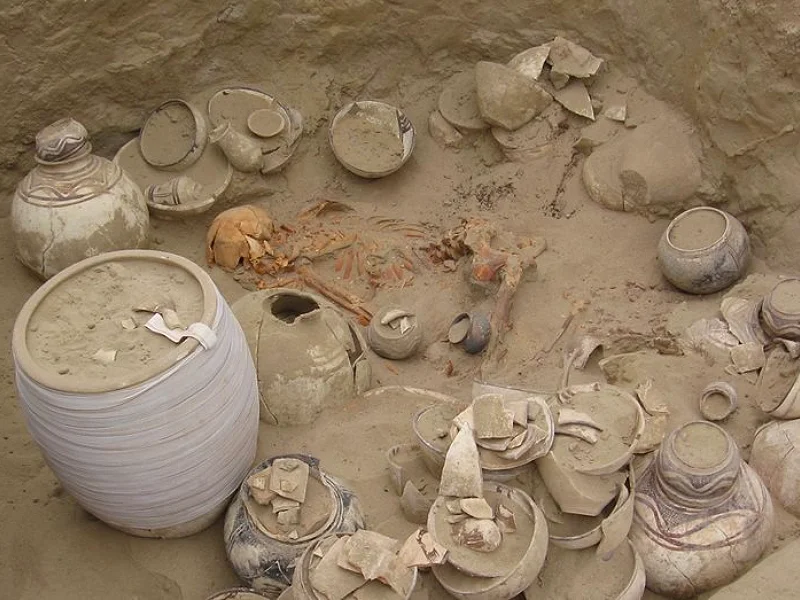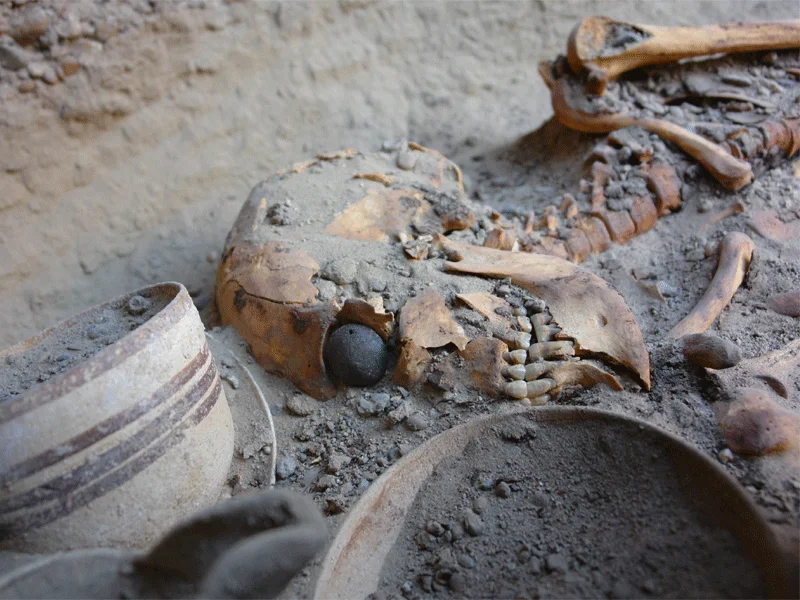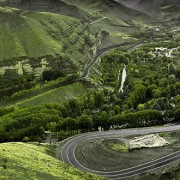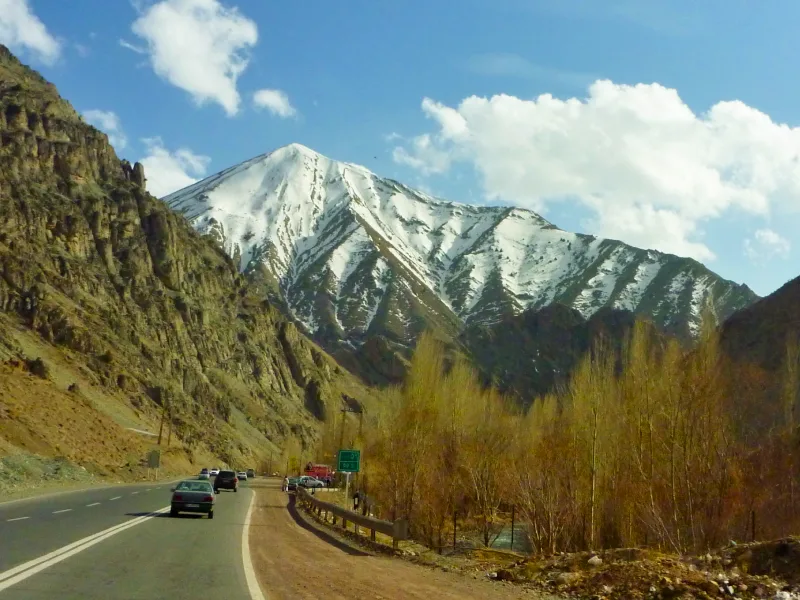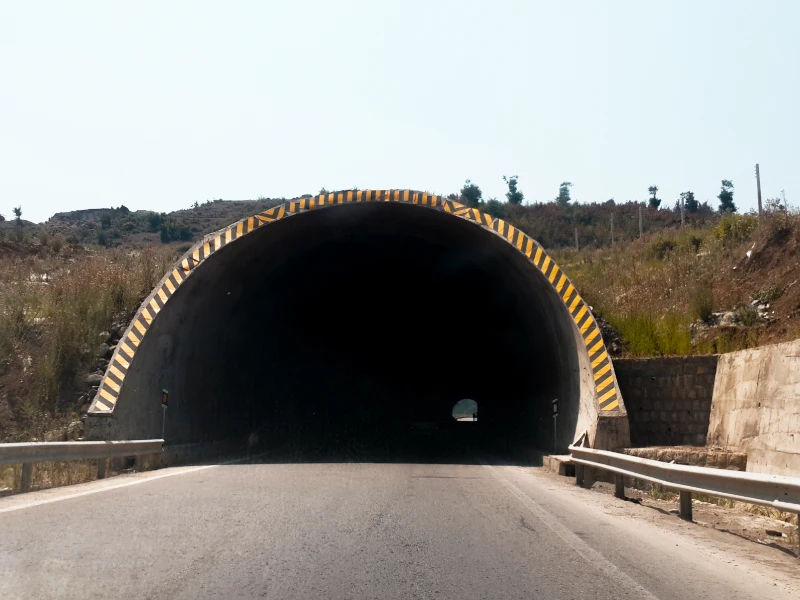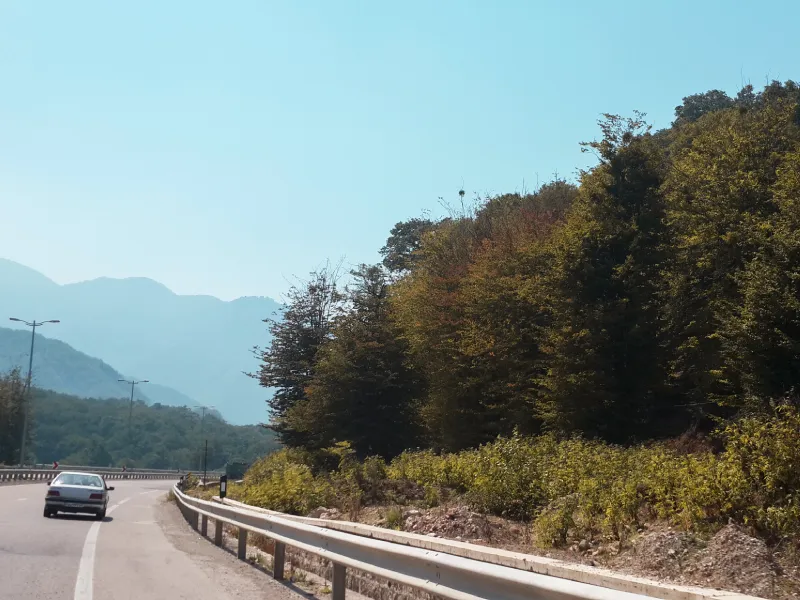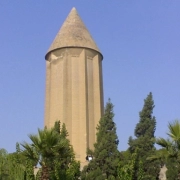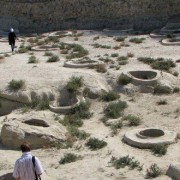Persepolis City (Takht-e Jamshid): Iran’s Ancient Gem
Iran, the oldest nation of history and culture, is famous for its major kingdoms and empires. Situated in the Middle East, this country was home to many dynasties. Persepolis City Shiraz is one of the evidences that shows the country’s rich legacy and heritage. Persepolis City (Takht-e Jamshid) was an ancient capital built under the Achaemenid Empire’s rulership. Furthermore, we will explore the Persepolis City Map and learn more about this magical location.
Persepolis City (Takht-e Jamshid)
Persepolis City (Takht-e Jamshid), also known as the ceremonial capital of the Achaemenid Persian Empire, is one of Iran’s most popular attractions carrying the history of centuries. This site is worldwide famous and is considered a national symbol. It has become a part of the identity of the Iranian people and shapes Iran’s culture and history.
The Persepolis city plan began under the reign of Dariush the Great, who established Iran’s leading empire, the Achaemenid Empire.
Persepolis city map covers a large area where you can see its impressive features, halls, and stone architecture. Persepolis City also includes other names, such as Takht-e Jamshid. This name is popular in the Persian Language, and many people often call this location by this name.
Of course, this site was destroyed and looted in 330 BCE by the army of Alexander the Great. This event marked the end of the Achaemenid dynasty and its power throughout the region. Nevertheless, the remains of this site, Persepolis City (Takht-e Jamshid), are still one of Iran’s magical and mysterious attractions, attracting thousands of tourists and history-buffs to its location from different parts of the world.
Persepolis City History
The ceremonial capital of the Achaemenid Empire, known as Persepolis City now, was founded around 517 BCE. Darius the Great, the third king of the Achaemenid dynasty, was the one who established this site, and its construction continued for several decades.
This city was built on a grand scale. If you take a look at the Persepolis City video, you will notice the power and wealth of the Achaemenid dynasty.
Interestingly, this site was also used to celebrate the new year of the Iranian people, and it is called Nowruz. Kings would receive gifts and tributes from different nations on this site. The end of Persepolis City traces back to 330 BCE, which was looted and burned down, affecting the role of Persepolis City (Takht-e Jamshid) as an honorable place for the great empire of Achaemenids.
Nevertheless, the Persepolis City History remained a wonder in history books since it was discovered and excavated in the 16th century by scholars from the Oriental Institute of the University of Chicago.
Although the greatness of this site is similar to its first part of creation, the Persepolis City History remains a story that will be passed on to generations, remarking its significance and amazement as a symbol of the Iranian people’s identity.
Persepolis City Now
Persepolis City Now is one of the most remarkable sites in Iran. Today, this attraction is the most iconic archaeological site in this country. With major discoveries about Persepolis City history and Persepolis City Map, this site has become a UNESCO site and is well-known in different communities all around the world. Moreover, the Iranian government, with the help of UNESCO, has tried its best to preserve this valuable attraction, and it is indeed hard to protect such a site from environmental factors, stabilize its structures, and manage its tourism side and visitors impacts. Hence, the Persepolis City Map remains a source of national pride for Iranians all around the globe.
Attracting numerous tourists, especially from all ages and with different backgrounds, has helped contribute to its value and has led to cultural and historical awareness.
Persepolis City Now can be seen as a marvel site for exploring and learning about Iranian empires, especially the Achaemenid Empire, which was a worldwide marvel. Indeed, we should not only appreciate this site but also help preserve it by considering environmental factors and general rules for visiting historical attractions. Overall, Persepolis City Shiraz is a legacy of ancient Iranian empires.
Persepolis City Shiraz
Persepolis City Shiraz is situated in the south of Iran, in the northeast of the modern city of Shiraz. Shiraz is located within the Fars province, and this province has a great story behind it, being one of the oldest areas in Iran.
Shiraz is the central city and the largest one in the Fars province of Iran. The relationship between Persepolis City and Shiraz can be described as an interesting one because Persepolis City is situated approximately 60 kilometers away from the center of Shiraz. Shiraz, which serves as a hub for visitors, is 1 hour away from Persepolis, and we can see and feel both the modern-day era and the old & ancient history of Iran. Shiraz also has a long history and dates back to the 4th century CE. This city was an important center for many dynasties, such as the Achaemenids, the Safavids, and the Zands.
So, we conclude that there is something special about Shiraz, and Persepolis City Shiraz also takes advantage of this mystery.
Today, Persepolis City Shiraz is the most famous attraction of this city. Visitors, even from inside Iran, give this city a visit to explore its historical sites.
Persepolis City Photos
If you don’t have the chance to visit this attraction, watching Persepolis City Videos or looking up Persepolis City Photos on Google can be interesting. Therefore, you can see different Persepolis City Photos and notice the greatness of this historical site located in Shiraz. You can see its monumental architecture and iconic images, such as the Apadana Palace, the Throne Hall, and the Hundred Column Hall.
Persepolis City Shiraz can be a paradise for photographers who take thematic historical photos or want to have a picture of this site in their archive.
One of the most iconic pictures of Persepolis City Photos is its grandeur staircase of all nations, representing the empire’s various satrapies and areas at that time.
Persepolis City Videos and Persepolis City Photos can easily highlight the characteristics of the ancient Iranian empire and the majesty of this site. This Achaemenid construction can capture your attention even behind your smartphones, tablets, or laptops. So, we do not only recommend you visit this site from closer distances but also suggest you see at least Persepolis City Photos in order to sense the ambition and power of the Achaemenid King, Darius the Great, and his vast empire all over the world.
Persepolis City Map
Persepolis City Map is vast, and its many features have been burnt down in the past and looted. Hence, the key features and layout of Persepolis City Map are simple and can still showcase its wonder.
Terrace and Apadana Palace Complex: The heart of Persepolis City Map is its terrace, which is made of stone, and you also see the massive Apadana Palace with its famous relief carvings and audience hall.
Throne Hall (Tachara) and Hundred-Column Hall: The Throne Hall is another audience hall that was a private one for the Achaemenid kings, and you can see the Hundred-Column Hall next to it, which was used for imperial receptions.
Treasury and Garrison Area: The wealth and tribute center of the Achaemenid Empire was its treasury, and the Garrison area provided housing and facilities for the imperial army.
Gate of All Nations and Residential/Artisan Quarters: The main entrance of Persepolis City Shiraz is the Gate of All Nations, and beyond the gate lies the residential and artisan quarters.
Burial Tombs of the Kings: If you look at the nearby mountainside, you can see the tombs of the Achaemenid kings such as Darius the Great.
Unfinished Gate of Xerxes: There is an incomplete ceremonial entryway that has been left unfinished.
Persepolis City Reconstruction
After discoveries of the Persepolis City Map and Persepolis City Plan, there were major efforts to visualize the ancient appearance of the site. Persepolis City Reconstruction efforts with the help of archaeologists, historians, and 3D modeling experts, have been made and still continue. In the past, many researchers have created detailed digital reconstructions of this site, and some of Persepolis City Plans were also confirmed by historians.
In a few limited cases, Iranian authorities and heritage organizations have undertaken partial restoration and reconstruction efforts on-site at Persepolis. For example, they have rebuilt and reinforced some of the platforms to visualize and explore them better while helping preserve and retain them for tourism.
Although some of these Persepolis City Reconstructions were controversial, all of them were based on history books and discoveries. Persepolis City reconstruction, as we said, is still in progress, and many historians, archeologists, and researchers are focusing on this attraction in Shiraz. Persepolis City Reconstruction can also affect and lead to a better understanding of the ancient empire of Iran, the Achaemenid dynasty, and the major events of that era.
Persepolis City Plan
Persepolis City Plan includes great architectural features considered very impressive and beyond its time by expert scholars and researchers. The design and layout of Persepolis City Plan reflect the power and ambition of the Achaemenid Empire.
The vast size of the palaces, halls, staircases, and columns impress every visitor and demonstrates the manpower at the Achaemenid kings’ disposal.
We can also see the architectural symbolism through statues and relief carvings. The winged bull statue is the most famous one, which conveys the empire’s authority and military power.
The empire’s diversity and vast scope can also be seen in the relief carvings. Persepolis City Plan was designed to be the ceremonial capital for different events and gatherings as the seat of imperial power. Moreover, the ability to construct and establish such a site showcases the Achaemenid’s engineering prowess and capabilities. This project was a small picture of a bigger scale, that is a highly advanced, technologically sophisticated civilization.
So, in general, The Persepolis City Shiraz was designed to be a symbol for later empires and generations, an example of imperial might, ambition, and global dominance.
Today, the Persepolis City (Takht-e Jamshid) symbolizes the Persian Empire and its ambition, pride, and dignity.
What City Is Persepolis Now?
As we mentioned, Persepolis City Location is about 60 kilometers northeast of the modern city of Shiraz. This site has become a major destination for tourists and explorers. Indeed, Shiraz flourished as a great city decades after Persepolis’ fall in the 4th century BCE, complicating the relationship between the two.
Shiraz’s rise as a tourist and archaeological study hub has been substantially affected by its proximity to the Persepolis ruins. Shiraz is the nearest major city and transportation hub to the Persepolis City (Takht-e Jamshid).
Although the ancient city is no longer a viable urban center, Shiraz has emerged as the region’s administrative and commercial hub. The recognition of Shiraz for its historical monuments, gardens, and cultural treasures has made this city one of the most popular cities to travel to. Persepolis, being only one of many wonders of Shiraz, can be considered the main attraction of the city, attracting guests and tourists.
In summary, by visiting Shiraz, you can enjoy its tourism and explore the ancient ruins of Persepolis City (Takht-e Jamshid) to capture it as an unforgettable memory. You can easily access Persepolis City by yourself with a car or participate in tour guides with other groups.
Why Is Persepolis So Famous?
To answer why is Persepolis so famous, we can gather many replies.
First of all, Persepolis City is famous because it has many architectural and artistic grandeur that are considered masterpieces in Persian art in ancient Iran.
Moreover, the historical significance of the Achaemenid empire adds to the popularity of this site since the ancient empire of Iran (the Achaemenid dynasty) was one of the largest empires in the whole world, known for its military might and great rulers.
In other words, Persepolis City Shiraz was the epicenter of one of the largest and most influential empires in the ancient world. Indeed, the discovered ruins, artifacts, and reliefs in Persepolis City provided a great insight into the culture, technology, and political organization of the Achaemenid Empire, resulting in shaping the identity of ancient Persian people and symbolizing today’s Persian people of Iran.
Interestingly, ongoing archaeological investigations continue to uncover discoveries that expand our understanding of ancient Persian society.
In conclusion, the combination of valuable cultural and historical information about ancient Persia, the architecture, and the symbols have made Persepolis city so famous among Iranians and non-Iranians community. That is why this attraction is a legacy for all Iranian people.
What Happened in the City of Persepolis?
The Persepolis City was an ancient site dating back to the Achaemenid Empire and has played a pivotal role in history. This city was once the center of mightiness and power. Founded by the Achaemenid King Darius the Great and later destroyed by the order of another king named Alexander the Great.
This city has seen it all, from celebrations to being burnt down to pieces and ashes. These stories only add to its importance and symbolism. There was also a time when this city was completely forgotten and abandoned because there was nothing left except some ruins and stones. Hence, it was rediscovered and excavated by some scholars and European archaeologists in the 19th and 20th centuries when the trend was to explore the history of nations.
Today, the ruins of Persepolis City Map that were reconstructed are the legacy of humanity and still can be focused on to find more understandings and pieces of information.
The UNESCO World Heritage Center and other organizations from Iran, such as Shiraz-based ministries, today, have much research about this magical and mysterious site and its importance. Focusing on this historical site can provide a lot of new insights into our legacy.
Persepolis City Facts
Persepolis was located in the heart of the Achaemenid Persian Empire, in what is now the modern-day Fars province of Iran.
Persepolis was founded around 515 BCE by Darius the Great.
The city was gradually expanded and embellished over the next century.
The monuments, architectural styles of buildings, halls, tombs, and stone staircases are considered phenomenal for their time.
Persepolis City was the ceremonial location for Achaemenid kings and was the main site for celebrating the Persian New Year known as Nowruz.
This city was a house for royal archives, treasures, and other governance facilities.
Persepolis was once looted and burnt to ashes by another king named Alexander the Great, which was the end of the Achaemenid Empire.
Persepolis City (Takht-e Jamshid) was once a forgotten and abandoned location that no one would know about its existence.
This site was discovered in the 19th and 20th centuries, although it is very old.
In 1979, the UNESCO World Heritage Centre decided to designate this site a UNESCO Heritage Site to help to preserve it.
Persepolis City is considered a great part of the Achaemenid Empire and today is the national pride and identity for many Iranian people inside and outside of the country.
Cultural Significance
Holding immense cultural significance in Iran and also on a global scale, Persepolis City can be described as an identity and a symbol. This site is the symbol of Persian imperial greatness and majesty, and many Iranian people consider it the source of national pride by still exploring it and sharing it with other communities and cultures.
This matter is deeply intertwined with Iranian culture and is the legacy of Iranian people passed on from their old empires. It can symbolize the ambition of the Iranian people and showcase power, sophistication, artistic insights, and achievements in the Achaemenid Empire civilization. So, this attraction in Shiraz is not only a Sociological legacy but also an architectural and artistic legacy that can be inspired for the next generations. In fact, the city’s unique blend of Persian, Median, Elamite, and Assyrian architectural styles has had a lasting influence on Iranian and Middle Eastern art and culture in diverse countries.
So, the prestigious recognition of Persepolis City not only acknowledges this sight as a cultural legacy belonging to the Iranian community but also to all humanities that were a part of history in ancient times.
Persepolis UNESCO World Heritage Center
The ancient city of Persepolis is on the list of UNESCO World Heritage, and it is one of the most famous attractions that this organization helped a lot to preserve along with the Iranian government. This attraction has been recognized as a UNESCO site since 1979 and has become a universally valuable site and a legacy for humanity. Persepolis City represents a masterpiece of human creative genius in the field of monumental architecture and art. Also, it bears unique cultural information about one of the oldest civilizations that was globally famous.
Persepolis City was praised by many organizations, historians, and scholars for its amazing architectural design and features that were beyond its time in the opinion of some experts.
Today, Persepolis is a UNESCO World Heritage and has raised support and awareness for preservation and conservation. Collaborating with UNESCO, the Iranian government, and other international organizations has undertaken various preservation and restoration projects to protect the site from environmental threats.
Nowadays, the UNESCO designation has also contributed to promoting the tourism of this site and the city of Shiraz, helping both economically and culturally the society of Iran and Iran’s legacy.
Persepolis City is one of the most famous attractions of the UNESCO World Heritage Centre.
Final Words
Persepolis City Now is one of the major locations where we can explore Iran’s history and learn more about the Achaemenid Empire. Persepolis Videos and Persepolis Photos cannot describe the majesty and greatness of this location.
So, we highly suggest you take a flight to Shiraz and explore this mysterious destination while having insights into Iran’s history. Persepolis City Shiraz can be an ideal experience if you are into diving into the old empires.
Are you planning to travel to Iran and looking for an Iran travel agency? Check out our Iran tours. Read about more Things to Do in Shiraz.
Naqsh-e Jahan Square, Isfahan (History, Photos, Location)
Naqsh-e Jahan Square, also known as Imam Square, is one of the most breathtaking architectural and cultural landmarks in Iran. Situated in the heart of Isfahan, this historic square is renowned not only for its aesthetic beauty but also for its profound historical significance. With its grand structures, unique layout, and vibrant history, Naqsh-e Jahan Square captures the heart and soul of Persian architecture, heritage, and craftsmanship.
This square is often considered a symbol of the rich cultural heritage of Iran. Its construction, spanning the early 17th century, was a marvel of urban planning and a testament to the architectural vision of its time. Each corner of the square tells a story of Iran’s golden age of art and culture, making it a beloved destination for travelers and historians alike.
About Naqsh-e Jahan Square
Naqsh-e Jahan Square, which translates to “Image of the World Square,” is part of Isfahan’s historic city center and reflects Iran’s rich architectural legacy. Covering approximately 89,600 square meters, it is one of the largest public squares in the world. The square serves as a focal point for the city, bringing together grandiose structures, lively markets, and significant religious sites, all of which add to its charm and cultural richness.
The design of Naqsh-e Jahan Square aligns with traditional Persian garden layouts, often symbolizing paradise. Its impressive design and detailed architectural features make it an iconic representation of Persian aesthetics, blending both functionality and beauty.
Who Built Naqsh-e Jahan Square?
The construction of Naqsh-e Jahan Square began during the reign of Shah Abbas I of the Safavid dynasty in the early 1600s. Shah Abbas envisioned Isfahan as a grand cultural and economic hub, and this square was the centerpiece of his vision. Built over several years, Naqsh-e Jahan Square showcased the advancements in Persian architecture and city planning. The square was designed by the renowned architect Sheikh Baha’i, who was instrumental in blending the art, spirituality, and utility of the square’s design.
Under Shah Abbas’s leadership, Naqsh-e Jahan Square became a place for royal ceremonies, celebrations, and sports, such as polo. To this day, it remains an emblem of Iran’s historical and cultural achievements.
Things to Do in Naqsh-e Jahan
Naqsh-e Jahan Square is a true masterpiece itself, but it also contains some of the most historical and cultural centers of Isfahan within itself. Here are the top things to do in Naqsh-e Jahan Square:
Shah Mosque
The Shah Mosque of Isfahan, also known as the Imam Mosque, is a radiant symbol of Persian ingenuity and spiritual devotion, crowning the southern side of Naqsh-e Jahan Square with timeless elegance. Its monumental portal invites visitors into a world where light, symmetry, and sacred geometry converge in harmony.
The mosque’s signature turquoise dome, one of the tallest in Iran, appears to float above a sea of intricate floral and calligraphic tilework, each pattern telling a silent story of divine inspiration. Beyond its aesthetic marvels, the mosque’s layout reflects deep cosmological meaning, aligning architecture with celestial principles. Every echo under its dome and glint of glazed tile speaks to a civilization that saw beauty as a pathway to the divine.
Opening Hours: Daily from 9:00 AM to 11:00 AM and 1:00 PM to 4:30 PM
Sheikh Lotfollah Mosque
Tucked gracefully on the eastern side of Naqsh-e Jahan Square, the Sheikh Lotfollah Mosque is a jewel box of Persian architecture, renowned for its quiet elegance and exquisite tilework. Unlike typical mosques, it lacks minarets and a courtyard, hinting at its exclusive use for the royal court.
Built during the reign of Shah Abbas I, this 17th-century marvel dazzles with a glowing cream-colored dome that shifts hue with the changing light of day, and a labyrinthine entrance hallway that masterfully orients worshippers toward Mecca. Inside, a kaleidoscope of delicate arabesques and peacock-feather patterns creates a sacred intimacy, making it less a public monument and more a divine secret whispered in stone and color.
Opening Hours: Daily from 9:00 AM to 12:30 PM and 2:00 PM to 6:00 PM
Ali Qapu Palace
Ali Qapu Palace stands majestically on the western side of Naqsh-e Jahan Square. Rising above Naqsh-e Jahan Square, the Ali Qapu Palace is a stunning fusion of regal authority and artistic ingenuity. Commissioned by Shah Abbas I, this imperial residence served both as a gateway to the square and a royal vantage point for observing festivities below.
The highlight lies in its top-floor music hall, where carved stucco niches in the walls not only amplify sound but resemble musical instruments themselves, turning architecture into acoustics. The palace’s sweeping terrace offers a commanding view of the square, while its mural-adorned rooms reflect the lavish aesthetic and courtly refinement of the Safavid dynasty. Ali Qapu doesn’t just display royal power—it orchestrates it with rhythm and grace.
Opening Hours: Daily from 9:00 AM to 6:00 PM
Isfahan Grand Bazaar
The Grand Bazaar of Isfahan, one of the oldest and largest bazaars in the Middle East. The Grand Bazaar of Isfahan, also known as Qeisariyeh Bazaar, is a living labyrinth of commerce, craftsmanship, and culture that has pulsed with life for centuries. Stretching from Naqsh-e Jahan Square deep into the heart of the old city, this bazaar is more than a marketplace—it’s a sensory journey through time.
Vaulted passageways echo with the sounds of bargaining and artisans at work, while the scent of spices and the shimmer of Persian carpets evoke stories of trade routes and dynastic splendor. Built during the Safavid period, it connects monumental architecture with everyday life, blending the grandeur of empire with the hum of daily hustle. In every alley and archway, the bazaar whispers the soul of Isfahan.
Opening Hours: Generally from 9:00 AM to 6:00 PM; some shops may close on Fridays
Naqsh-e Jahan Square Facts
Naqsh-e Jahan Square is notable for being the second-largest square in the world, after Tiananmen Square in Beijing. It also stands out as a UNESCO World Heritage Site, recognized for its architectural and cultural significance. Each side of the square hosts a unique architectural masterpiece, including mosques, palaces, and a bazaar, showcasing the distinctive Islamic and Persian styles.
The square’s dimensions (560 meters long and 160 meters wide) are perfectly symmetrical, with pathways and pools strategically positioned to enhance the beauty of its surroundings. These thoughtful details add to its allure and testify to the meticulous planning of Persian architects.
Naqsh-e Jahan Square Location
Naqsh-e Jahan Square’s layout combines beauty, symmetry, and functional design. Its rectangular shape and well-balanced architectural features provide visitors with a harmonious experience as they stroll through the site. Four primary attractions are situated along each side of the square, each serving different roles, religious, political, and commercial.
The northern side houses the bustling Qeysarieh or Isfahan Grand Bazaar, while the east side features the Sheikh Lotfollah Mosque, famous for its delicate tilework. On the west side lies Ali Qapu Palace, which once served as a royal residence, and on the south is the grand Shah Mosque, a masterpiece of Safavid architecture.
You can reach the Naqsh-e Jahan Square in the very center of Isfahan city.
Naqsh-e Jahan Square Plan
Naqsh-e Jahan Square is located in the center of Isfahan, Iran. The city itself is accessible by plane, train, and bus, making it a popular destination for both domestic and international travelers. Situated within walking distance from many historical sites in Isfahan, the square is easily reachable for visitors who wish to immerse themselves in Iran’s rich cultural heritage.
The central location of the square also makes it a lively meeting place for locals and tourists alike. It’s surrounded by hotels, restaurants, and shops, which offer visitors a chance to experience Persian hospitality and taste local delicacies.
Naqsh-e Jahan Square Reviews
Visitors from around the world often describe Naqsh-e Jahan Square as an awe-inspiring site that transports them back to ancient Persia. The intricate architecture, combined with the serene ambiance, creates a captivating experience for everyone who steps into the square. Many tourists highlight the beauty of the tilework in the mosques, the historical significance of Ali Qapu Palace, and the vibrant atmosphere of the bazaar.
Some travelers recommend visiting the square during the late afternoon when the sunlight casts a golden glow over the buildings, adding to its mystical allure. Overall, the square’s ambiance and historical richness leave a lasting impression on all who visit.
Last Words
Naqsh-e Jahan Square is much more than a historical landmark; it is a cultural icon that embodies the artistic achievements of Persian civilization. Its architectural marvels, coupled with the deep history that surrounds it, make Naqsh-e Jahan Square a must-visit destination for anyone interested in Iranian history and culture. Today, it stands as a timeless proof of Iran’s legacy, inspiring visitors with its beauty and historical significance.
Naghshe Jahan Square, a showcase of the most beautiful artistic works from the Safavid era, became a UNESCO World Heritage site in 1979 and is the highlight of every culture tour to Iran.
Are you planning to travel to Iran and looking for an Iran travel agency? Check out our Iran tours.
Shahr-e Sukhteh (Burnt City), Iran: History, Photos
In the heart of Iran’s Sistan and Baluchestan Province lies a city that seems to whisper secrets of a forgotten civilization—Shahr-e Sukhteh, named after the signs of fire damage found during excavations, meaning the “Burnt City.” This ancient city, steeped in mystery and intrigue, has captivated historians, archaeologists, and adventurers alike for decades. The ruins of this prehistoric city became a UNESCO World Heritage Site in July 2014.
The city gets its dramatic name from the evidence of multiple fires that once scorched the settlement. But even through the ashes, its legacy glows. From the world’s oldest animated pottery to what is believed to be the earliest artificial eye, Shahr-e Sukhteh is unlike any other archaeological site on Earth. With a history dating back over 5,000 years, it’s a destination not only rich in artifacts but also in stories that stretch the imagination. This article delves into every fascinating corner of this marvel, perfect for both travelers and curious minds in search of humanity’s ancient ingenuity.
About Shahr-e Sukhteh
Located between the Helmand River and the vast deserts of southeastern Iran, Shahr-e Sukhteh was once a flourishing metropolis of the Bronze Age. Spanning over 151 hectares, it’s believed to have been one of the largest cities of its time. Unlike many ancient cities that developed around trade or warfare, Shahr-e Sukhteh was primarily a center for innovation, with advanced urban planning and a unique culture that didn’t mirror the major civilizations of Mesopotamia or the Indus Valley. Its sheer size and complexity reflect a society ahead of its time, both scientifically and artistically.
The city showcases civilization that embraced progress in every sphere—be it architecture, craftsmanship, or even early forms of medicine. From residential areas to workshops and cemeteries, every inch of the site reveals how people lived, died, and celebrated life.
What truly makes Shahr-e Sukhteh stand out is its individuality. Despite being contemporaneous with major Bronze Age cultures, its artifacts and construction style show little influence from them, suggesting it developed independently. That autonomy is what makes it so important in understanding human evolution and cultural diversity.
Shahr-e Sukhteh History
The tale of Shahr-e Sukhteh’s rediscovery began in the early 20th century when archaeologists first stumbled upon signs of an ancient settlement beneath the desert sands. Serious excavation began in the 1960s under the guidance of Italian archaeologist Maurizio Tosi, whose efforts unveiled layers of a civilization that had been untouched for millennia.
The site was buried not by conquest or disaster, but by time and the elements, preserving artifacts in extraordinary condition. From intricate ceramics to skeletal remains, everything unearthed pointed to a culture rich in creativity and structure.
Historical analysis reveals that the city was inhabited between 3200 BCE and 1800 BCE. Over those 1400 years, it experienced four main periods of habitation before it was mysteriously abandoned.
The reasons behind its decline remain unclear—some speculate environmental changes, while others suggest internal societal shifts. But one thing is certain: the fall of Shahr-e Sukhteh marked the end of a civilization that had already left an indelible imprint on human history. Today, the city stands not as a relic of the past, but as a beacon of human potential, inviting us to question what we really know about early societies.
Shahr-e Sukhteh Age
Shahr-e Sukhteh’s sheer age is staggering—it’s believed to have been established around 3200 BCE, making it older than most of the pyramids of Egypt and nearly as ancient as the early Mesopotamian cities.
Radiocarbon dating and stratigraphic studies confirm that this city flourished for over a millennium, suggesting not just a long-standing habitation but a sustainable way of life. Considering the harsh desert climate, the fact that such an advanced society could survive for that long is nothing short of extraordinary.
Its age adds a layer of depth to its discoveries. When researchers analyze tools, bones, and artwork from the site, they’re not just looking at old objects—they’re peering into the minds of people who lived over 5,000 years ago.
Unlike other ancient cities that show signs of evolution through conquest or cultural absorption, Shahr-e Sukhteh appears to have grown organically. It matured with its own pace, values, and innovations. Understanding its age gives scholars context on how unique and self-reliant this civilization was in the broader timeline of human history.
Shahr-e Sukhteh Things to Do
For modern-day explorers, visiting Shahr-e Sukhteh is like stepping into a real-life time capsule. One of the most rewarding experiences is walking through the preserved urban layout, which still features remnants of streets, workshops, and residential quarters. Guided tours can enhance the visit, offering stories and insights into how the city once thrived.
Visitors often describe an overwhelming sense of wonder as they stroll through the dusty paths that once buzzed with activity thousands of years ago. It’s not just a visit—it’s a unique journey into humanity’s ancient past.
The nearby museums house a rich collection of artifacts, including pottery, tools, and personal items that were discovered during excavations. Travelers can also engage with local communities that take pride in preserving and narrating the city’s legacy. Traditional Baluchi crafts, music, and cuisine offer a blend of old and new, giving a complete cultural experience. Whether you’re an archaeology enthusiast or a curious traveler, Shahr-e Sukhteh offers a profound sense of connection to our shared human story.
Shahr-e Sukhteh Bowl
Among the many astonishing discoveries from Shahr-e Sukhteh, one artifact continues to captivate minds around the world—the animated bowl. This pottery piece, dating back over 5,000 years, features a sequence of images depicting a goat leaping to nibble from a tree. When rotated, the sequence mirrors the concept of modern animation, making it the world’s oldest known example of animation.
What’s fascinating is not just the artistry but the understanding of motion and storytelling it implies. The artists of Shahr-e Sukhteh were not merely decorative in their approach, they were narrators, inventors, and perhaps the first animators in human history. If Shahr-e Sukhteh is not on your list for your tour in Iran, we highly recommend you see the world’s first animation in the National Museum of Iran in Tehran.
The bowl isn’t just an isolated artistic marvel, it’s a reflection of how advanced and imaginative this ancient civilization was. The symmetry, precision, and fluidity of the goat’s motion suggest an intricate understanding of both biology and visual perception. Some scholars believe it could have been used for ceremonial purposes, while others argue it was simply an artistic expression.
Regardless of its function, the bowl is now a symbol of how Shahr-e Sukhteh defied every conventional narrative about ancient societies being primitive. It challenges us to reconsider the origins of art, animation, and intellectual curiosity.
Shahr-e Sukhteh Eye
Perhaps the most headline-grabbing discovery from Shahr-e Sukhteh is the world’s oldest artificial eye, found in the skull of a woman estimated to be between 25 and 30 years old. This marvel dates back to around 2900 BCE and is crafted from a mixture of bitumen paste and natural tar, with delicate gold threads embedded to simulate capillaries.
What’s most incredible is not just the invention itself, but how advanced the craftsmanship was. The eye was so well-fitted into her socket that it left a lasting imprint on her upper eyelid—a sign she wore it regularly, not just ceremonially.
This ancient prosthetic tells us volumes about the society’s medical knowledge and commitment to human dignity. The very idea of creating and wearing a prosthetic in such a realistic and aesthetically pleasing way reveals a compassionate and medically aware culture.
Today, this artifact is not only a medical milestone but also a profound symbol of the city’s humanity and ingenuity. It shifts the narrative about Bronze Age civilizations, proving they were not just surviving—they were thriving, innovating, and even practicing forms of early healthcare and cosmetic surgery.
Shahr-e Sukhteh Location
Located in the vast desert landscape of southeastern Iran, Shahr-e Sukhteh rests about 55 kilometers west of the modern city of Zabol, near the Afghan border. Its location, though remote today, was once a hub of civilization. Thousands of years ago, this site was strategically positioned along important trade routes connecting Mesopotamia, the Indus Valley, and Central Asia. The Helmand River, which once flowed nearby, provided much-needed water for agriculture, making it an oasis in the midst of arid terrain. This geography played a major role in the city’s prosperity and unique cultural evolution.
Visiting the site today, surrounded by silence and sand, gives one a mysterious sense of the passage of time. It’s a location that offers not only historical insights but also a powerful emotional experience, making it a must-see for those who truly want to touch the ancient past.
Last Words
Shahr-e Sukhteh is more than an archaeological site—it’s proof of human resilience, creativity, and the unending quest for knowledge. Its ruins whisper tales of innovation, compassion, and culture that transcend time. From the earliest artificial eye to the world’s first animated artwork, the city pushes the boundaries of what we thought we knew about ancient civilizations. For centuries, it lay hidden beneath the sands, waiting to redefine history—and now that it has, the world is finally beginning to listen. Every stone, artifact, and skeleton uncovered adds another piece to the grand puzzle of human evolution.
In a world obsessed with modern marvels, Shahr-e Sukhteh reminds us that greatness often begins in the most unexpected places. It humbles us with its achievements and inspires us with its stories. Whether you’re an adventurer, a history buff, or someone simply curious about the ancient world, this burnt city will leave an indelible mark on your soul. It’s a destination where the past isn’t just preserved—it’s alive. So, the next time you think about ancient cities, remember this hidden gem in Iran’s desert—a city that burned but never truly died.
Are you planning to travel to Iran and looking for an Iran travel agency? Check out our Iran tours and feel free to contact us.
Chalus Road, Iran: Photos, History, Things to Do
Chalus Road (Chaloos Road) is on the 20 of the world’s most spectacular roads list. If you are thinking about having a tour to Iran, consider traveling on this road to the North of Iran as well. Chalus Road is one of Iran’s most scenic and legendary routes. This road connects the bustling capital city of Tehran to the northern province of Mazandaran, where the lush forests and the Caspian Sea await travelers. For decades, Chalus Road has been more than just a route—it’s been a cultural icon, a historical passage, and a symbol of nature’s majestic beauty. Whether you’re a road trip enthusiast, a nature lover, or someone curious about Iran’s hidden gems, Chalus Road offers an unforgettable experience that blends adventure with tranquility.
About Chalus Road Iran
Chalus Road is one of Iran’s busiest and most popular mountain routes, especially during weekends and holidays. It winds through the Alborz mountain range, creating a stunning contrast between high-altitude terrains and deep green valleys.
The road is celebrated for its dramatic curves, tunnels, waterfalls, and sweeping views that seem to change with every turn. For Iranians, it’s not just a road but a cherished getaway spot that leads to some of the country’s most beloved natural destinations.
This iconic road spans several cities, towns, and villages, each offering a slice of local life, authentic food, and cultural richness. Throughout the drive, travelers encounter small shops selling local produce, roadside eateries, and cozy spots to enjoy the cool mountain breeze. Because of its unique geographical route and its role in connecting the heart of Iran to the north, Chalus Road continues to attract travelers, vloggers, and international tourists who want a taste of authentic Iranian beauty.
Chalus Road History
Chalus Road was constructed during the reign of Reza Shah in the 1930s, as part of his vision to modernize Iran’s infrastructure and enhance connectivity between major regions. The road was initially built using limited machinery and heavy manual labor, cutting through steep mountains and deep valleys. Its construction marked a significant engineering achievement at the time, symbolizing the emergence of a modern transportation system in Iran. Over time, this road became a crucial route for trade and tourism, bridging Tehran with the vibrant Caspian coast.
What makes Chalus Road even more fascinating is how it has evolved without losing its original charm. Over the years, it has undergone multiple renovations and safety upgrades while still preserving its natural surroundings. Historical landmarks, such as the Kandovan Tunnel—one of the oldest tunnels in the country—serve as reminders of the road’s engineering legacy. As Iran began welcoming more domestic and international tourism, Chalus Road grew into more than just a travel path; it became an experience deeply ingrained in Iranian memory and identity.
In 1933, Chalus Road was opened for public use. After two years, another major project started the Kandovan Tunnel with an 1886m, which makes the trip 13 kilometers shorter. Kandovan is the eleventh tunnel in Chalus, and it took four years to complete.
Visiting Chalus on your tour to Iran at any season is appealing. The road crawls up the mountains next to the beautiful valleys that each season has its own beautiful color; lush green springs and summers, vibrant yellow and red autumns, and all-white winters.
Chalus Road Length
Chalus Road stretches approximately 160 kilometers (about 100 miles), starting from Karaj, a city near Tehran, and ending in the city of Chalus in Mazandaran province. While this may seem relatively short by global standards, the journey can take several hours due to the winding nature of the road, varying weather conditions, and frequent stops made by travelers soaking in the sights. The road’s length is packed with elevation changes, forested stretches, river crossings, and mountain tunnels that make the drive feel much longer and more immersive.
The variation in terrain across this 160-kilometer stretch adds to its uniqueness. You begin your journey in the semi-arid outskirts of Tehran, gradually climbing into misty, forest-covered mountains, and finally descending into the lush, humid coastal areas. This dramatic change in environment and atmosphere makes the length of Chalus Road seem like a passage through multiple ecosystems and climates in just a few hours, offering a dynamic travel experience rare in such a short drive.
Chalus Road Weather
Chalus Road is famous not only for its beauty but also for its unpredictable weather patterns. Due to its elevation and geographic location, the weather can shift rapidly, from bright and sunny in one section to foggy or snowy in another.
In winter, heavy snowfall can make parts of the road impassable, particularly near the Kandovan Tunnel. Road closures due to avalanches or icy conditions are common, and travelers are advised to check road conditions before setting out during the colder months.
During spring and summer, Chalus Road becomes a lush paradise. Melting snow feeds the rivers and waterfalls, and the surrounding forests bloom with vibrant greenery. Autumn is equally enchanting, as the trees along the route explode into hues of orange, red, and yellow.
The moderate and often cool weather in these months makes it the best time to visit. With each season offering a different charm, the road remains a year-round attraction, though summer and autumn are the safest and most picturesque times for a road trip.
Chalus Road Things to Do
There’s no shortage of things to do along Chalus Road. For nature lovers, numerous hiking trails lead into the Alborz mountains, offering panoramic views and wildlife encounters. The Namak Abroud tourist complex near Chalus city features a cable car ride that lifts you above the forest canopy for breathtaking views of the Caspian Sea and surrounding mountains. It’s a must-see attraction for families and adventurers alike. Additionally, travelers can enjoy trout fishing in the mountain streams or camping near the road’s scenic overlooks.
Food lovers will find Chalus Road to be a delightful culinary journey. Roadside restaurants serve traditional northern Iranian dishes such as Mirza Ghasemi, Fesenjan, and fresh grilled fish. Many travelers plan their trip around these eateries, making stops just to enjoy the authentic taste of Mazandaran cuisine.
Shopping is also an option, with local vendors selling organic honey, pickles, and handcrafted souvenirs. Whether you’re in the mood for adventure or relaxation, Chalus Road offers a full spectrum of activities to fill your itinerary.
Chalus Road Photos
Photographers and Instagram enthusiasts find Chalus Road irresistible. With its ever-changing light conditions, dramatic mountain backdrops, foggy forests, and picturesque rivers, it’s a visual feast. Whether captured from a moving car or during a peaceful hike, each snapshot tells a unique story.
Many professional and amateur photographers consider Chalus Road one of the best photography destinations in Iran, and it’s featured in countless travel blogs, social media posts, and documentaries showcasing the natural beauty of the Middle East.
If you’re planning to document your journey, sunrise and sunset are ideal times for golden lighting that adds magic to your shots. Drone photography has also become increasingly popular here, offering a bird’s-eye view of the winding road cutting through lush terrain. Sharing high-quality visuals can also boost your SEO presence and engage users interested in off-the-beaten-path travel content.
Chalus Road Map
Understanding the route before you travel is essential, and modern navigation tools have made exploring Chalus Road easier than ever. A typical Chalus Road map begins in Karaj, heading north through regions like Asara and the Kandovan area before reaching Chalus city. Along the way, key landmarks include the Karaj Dam, Kandovan Tunnel, and several lookout points that are ideal for resting and capturing the scenery. The road features multiple rest stops, fuel stations, and signage in Persian, and often in English, to guide travelers.
Online maps like Google Maps and local Iranian apps such as Neshan or Waze provide live traffic updates, road conditions, and even restaurant suggestions. Due to frequent congestion during holidays, it’s helpful to use these tools to find alternative travel times or side routes. With digital mapping integrated into your travel plans, you can navigate Chalus Road confidently, maximizing your sightseeing opportunities while avoiding traffic delays.
Attractions Near Chalus
Nestled between lush forests and the Caspian Sea, the area near Chalus offers a breathtaking escape into nature and adventure. Just a scenic drive away, Karaj Dam stuns with its majestic mountain backdrop and serene waters, perfect for peaceful picnics or boating. Namakabrud enchants visitors with its scenic cable cars and lively resort vibes, offering panoramic views and fun attractions for all ages. For a more tranquil retreat, Valasht Lake lies hidden among the mountains—a crystal-clear gem ideal for hiking, reflection, and soaking in the serene beauty of northern Iran.
Karaj Dam
Karaj Dam on the Karaj River that runs along this road is one of the main water sources of the capital and one of the most popular picnic areas for passengers of Chalus. After the dam, we get to the historical attractions of Chalus.
There are a lot of historical villages that still have inhabitants, and so many historical castles and palaces that have remained from the Sassanian Empire. Attractions along this 160km (100 miles) road are numerous. Besides the gorgeous landscape, waterfalls, and springs, there are historical sites as well. There is a castle called Salsal that dates back before the arrival of Islam in Iran, around 1400 years ago.
Namakabrud
The coastal town of Namakabrud lies near the Chalus Road in Iran. Known for its beautiful scenery and crystal-clear waters, it is a popular getaway destination for tourists. You can try the most delicious seafood cuisine in Namakabrud, which is a must-try for every visitor.
Namakabrud is perfect for anyone looking for beach relaxation, cultural exploration, or delicious food. Another fun thing to do in Namakabrud is to ride its cable cars. Namakabrud Telecabin is one of the many famous attractions near Chalus. The view of the vast greenery of Namakabrud before your eyes is truly a magnificent experience. With its stunning natural beauty and rich cultural heritage, Namakabrud is a hidden gem that you won’t want to miss near Chalus Road.
Valasht Lake
Valasht Lake is a scenic natural wonder near Chalus Road in Iran. Known for its cool waters and stunning surroundings, Valasht Lake is a popular destination for both tourists and locals. You can experience hiking, camping, fishing, and boating at Valasht Lake. Amidst the lush greenery and peaceful atmosphere, this is a perfect place to relax and rest. Whether you’re a nature lover or just looking for a peaceful getaway, Valasht Lake should be on your travel itinerary. Make sure you visit Valasht Lake near Chalus Road if you’re planning a trip to Iran and experience the natural beauty of this incredible site.
Last Words
Chalus Road is more than just a stretch of highway—it’s a celebration of nature, culture, history, and adventure. From its rich historical roots and engineering marvels to its awe-inspiring landscapes and modern-day tourist attractions, it embodies the spirit of Iran’s natural and cultural diversity. Whether you’re capturing photos, tasting regional cuisine, or simply soaking in the scenery, every moment on Chalus Road feels like a discovery. It remains one of Iran’s most beloved destinations for good reason—and should be on every travel enthusiast’s bucket list.
On a tour to Iran, when you travel on Chalus Road, you don’t think about your destination; the road becomes the destination. Chalus Road, after 82 years, is still one of the main roads of Iran, and every spring and summer, most Iranians take this route for a vacation in the coastal region of the Caspian Sea.
Are you planning to travel to Iran and looking for an Iran travel agency? Check out our Iran tours and feel free to contact us.
Gonbad-e Qabus Tower (Photos, History, Architecure)
Tucked away in the lush province of Golestan in northern Iran, Gonbad-e Qabus is a hidden historical gem that enchants travelers with its towering beauty, deep-rooted heritage, and enchanting landscapes. Known primarily for its iconic brick tower that pierces the sky, this city offers more than just a glimpse into Persian architecture—it’s a full-blown dive into a thousand years of Persian-Islamic history. Whether you’re a history buff, architecture lover, or curious wanderer, Gonbad-e Qabus has something timelessly captivating to offer.
About Gonbad-e Qabus
Gonbad-e Qabus or Gonbad e Kavus is a mid-sized city with a vibrant soul, located in Golestan Province in northern Iran. Despite being relatively modest in size, it commands significant cultural weight thanks to its rich historical backdrop and its position as a prominent hub during various Persian empires. Originally known as Gorgan or Jorjan in ancient texts, the city holds a unique place in Iranian civilization. With its diverse population, mainly comprised of ethnic Turkmen and Persians, the city thrives on a rich cultural tapestry of languages, traditions, and festivals.
This urban area is not just about history—it’s alive with modern energy too.
Gonbad-e Qabus is well-known for its bustling bazaars, serene parks, and local cuisine that tantalizes with flavors of saffron, fresh herbs, and ancient cooking traditions. It’s a city where old meets new, where the silhouette of a millennium-old tower watches over lively streets filled with cafes, students, and storytellers.
The story of the tower is about a literate Ziyarid ruler, one of the rulers of Iranian Dynasties and Monarchies, named Qābus Ibn Voshmgir, who is famous for his book Qaboosnameh which he wrote for his son Gilanshah. This tower is the tomb of the wise father whose book is full of guidance for his son so he can be a great successful ruler after Qabus passes away and Gilanshah takes the seat of power. Gonbad-e Qabus was the only inspiration for Robert Byron, the British travel writer and architectural critic, to take a tour of Iran.
UNESCO World Heritage Site
The Gonbad-e Qabus Tower was added to the UNESCO World Heritage List in 2012 for its outstanding universal value. The tower is a pristine example of early Islamic architecture, showcasing structural innovation with a stunning aesthetic.
Built in 1006 AD, this architectural wonder stands 72 meters tall and remains the tallest pure-brick tower in the world. Its inclusion in the World Heritage list means the site is now under international protection, helping preserve it for future generations.
This recognition has also boosted the city’s international visibility, drawing scholars, architects, and tourists from all over the world. With the support of UNESCO, conservation projects have been carried out to protect the structure from environmental wear and urban encroachment. The designation not only honors the structure’s artistic and historical merit but also highlights the importance of Persian influence on Islamic and world architecture. The tower isn’t just a monument; it’s a globally recognized beacon of cultural legacy.
Gonbad-e Qabus Tower History
The history of Gonbad-e Qabus stretches back to the days of the ancient Hyrcanian civilization, long before it became part of the Islamic cultural world. The region, once known as Gorgan, was a vital frontier of the Persian Empire and served as a strategic and cultural link between Central Asia and the Iranian plateau. Its position made it a melting pot of ideas, trade, and traditions. When Islam reached Persia, Gonbad-e Qabus transitioned into a center for Islamic scholarship and architecture, giving birth to its most iconic monument, the Gonbad-e Qabus Tower.
Throughout centuries, the city has seen the rise and fall of empires, from the Parthians and Sassanids to the Seljuks and Timurids. Each era left its imprint on the land, and many archaeological remains from these times can still be found scattered across the region.
This tower is the only structure remaining from the Ziyarid era when the city of Jorjan (Gorgan) was the capital of art and science that was destroyed during the Mongol invasion. Gonbad-e Qabus is a magnificent masterpiece of Islamic architecture because of its aesthetic geometry.
Gonbad-e Qabus Tower
The Gonbad-e Qabus Tower is the crown jewel of the city, an architectural marvel built a thousand years ago by order of Qabus Ibn Voshmgir, a local ruler, poet, and patron of science and literature. The tower served both as a tomb for Qabus and a symbol of his power. Rising dramatically from a low hill, the structure is visible from miles around, standing like a needle against the sky with no rival in its design. It’s made entirely of baked bricks, arranged in a spiral pattern that accentuates its height and elegance.
What makes the tower especially fascinating is the inscription encircling its base in Kufic script, declaring its origin and purpose. Despite the simplicity of materials, the structure is geometrically complex and incredibly well-preserved. It lacks any decorative tilework or painting, relying solely on form and proportion for its aesthetic power. This minimalist brilliance has left architects and historians in awe for centuries. Visiting the tower isn’t just seeing a building; it’s stepping into a time capsule where architecture and ambition stand in perfect harmony.
Gonbad-e Qabus Tower Architecture
The architecture of Gonbad-e Qabus Tower is a masterpiece of early Islamic design, representing a blend of Persian tradition and technical innovation. At first glance, its simple exterior might seem unassuming, but a closer look reveals a carefully engineered structure that combines strength, elegance, and harmony. The tower stands 61 meters high, including its conical roof, and features a decagon base made from fired bricks—each placed with mathematical precision. The tapering cylindrical shaft of the tower narrows as it ascends, culminating in a pointed dome, making it appear even taller than it is.
What sets this architectural wonder apart is its mastery of geometric form. The tower has ten flanges (vertical ribs) evenly spaced around its circumference, creating a rhythmic visual effect that’s both striking and timeless. The interior, although no longer accessible, was once designed as a resting place for Qabus himself. The precision of design, combined with the engineering knowledge to create such height without support columns, showcases the brilliance of Persian architectural minds from a millennium ago.
Gonbad-e Qabus Tower Photos
Photos of Gonbad-e Qabus capture a silent dialogue between earth and sky—a towering structure that seems to rise endlessly from the green plains surrounding it. From afar, the tower appears like a lone sentinel standing guard over the history of the region, and this solitary aesthetic is what makes it a favorite among photographers.
The best time to capture the tower is during golden hour when the sunlight casts long shadows and the brick facade glows with a warm, honeyed hue. In every shot, the elegance of the design and the serene backdrop come together in poetic symmetry.
Travel bloggers and photography enthusiasts love this location for its dramatic yet minimalist composition. Many pictures also include aerial views that highlight the stark contrast between the ancient tower and the modern city that has grown around it. Others focus on close-ups of the Kufic inscription or the unique interplay of light on the brick textures. Whether you’re using a professional camera or a smartphone, the visual storytelling potential at Gonbad-e Qabus is endless. It’s no wonder that social media platforms are filled with mesmerizing images of this Persian icon.
Gonbad-e Qabus Weather
The weather in Gonbad-e Qabus plays a significant role in shaping the city’s natural beauty and the experience of visiting its historical sites. Located in the northern part of Iran near the Caspian Sea, the region enjoys a relatively moderate climate compared to Iran’s central plateau. For visiting the tower, spring (March to May) is the most pleasant time, with blooming greenery and mild temperatures. The summers can be hot and humid, especially in July and August, but even then, the evenings cool down enough to enjoy outdoor exploration.
Winters are generally cold and rainy, especially from December to February, though snowfall is rare. Autumn also provides a delightful window for visiting, as the surrounding nature turns golden and the weather remains comfortably cool. It’s worth noting that the changing light throughout the day affects how the Gonbad-e Qabus Tower appears—cloudy weather gives it a mysterious look, while clear skies make it almost glow. For travelers planning a photo shoot or sightseeing trip, checking the seasonal weather patterns can significantly enhance the overall experience.
Gonbad-e Qabus Tower Location
Gonbad-e Qabus is strategically located in Golestan Province, about 90 kilometers northeast of Gorgan, the provincial capital. Located between the Alborz Mountains and the Caspian Sea, the city benefits from both lush vegetation and panoramic landscapes. Its geographical setting once made it a crucial point on the Silk Road, connecting traders and travelers between Persia and Central Asia. Today, this location continues to make the city a vibrant crossroads of culture, language, and tradition.
Reaching the city is fairly easy for those traveling from major Iranian cities like Tehran or Mashhad, thanks to a well-developed road and rail network. There are regular bus and train services, and the nearby Gorgan Airport connects to several domestic destinations.
Once in Gonbad-e Qabus, getting around is simple, with taxis and local transport readily available. For international travelers, visiting this historical hub may take a bit more planning, but the cultural richness and scenic setting make it a rewarding addition to any itinerary.
Gonbad-e Qabus Tower Map
Using a map of Gonbad-e Qabus isn’t just helpful, it’s essential if you want to make the most of your visit. While the tower is undoubtedly the city’s centerpiece, there are many surrounding attractions that deserve attention. On the map, the Gonbad-e Qabus Tower is situated near a spacious urban park, providing a peaceful setting ideal for family outings or quiet reflection. Walking paths and nearby cafes make it easy to spend a few hours around the area.
Beyond the immediate vicinity of the tower, a detailed city map will reveal a variety of other points of interest, such as museums, bazaars, traditional restaurants, and historical mosques.
For nature lovers, the nearby forests and rolling plains of Golestan Province are just a short drive away and worth exploring. Interactive digital maps help a lot with highlighting heritage routes and walking tours that offer a deeper dive into the city’s history and architecture. Whether you’re planning a day trip or a longer stay, having a map is your gateway to discovering everything Gonbad-e Qabus has to offer.
Last Words
Gonbad-e Qabus is far more than just a name on a historical map. From its awe-inspiring brick tower that still stands defiant after a millennium to its rich tapestry of cultures and traditions, the city represents the heart and soul of northeastern Iran.
Whether you’re a seasoned traveler, a lover of architecture, or simply curious about lesser-known gems, Gonbad-e Qabus offers a deeply rewarding experience that bridges past and present effortlessly.
Are you planning to travel to Iran and looking for an Iran travel agency? Check out our Iran tours and feel free to contact us.

